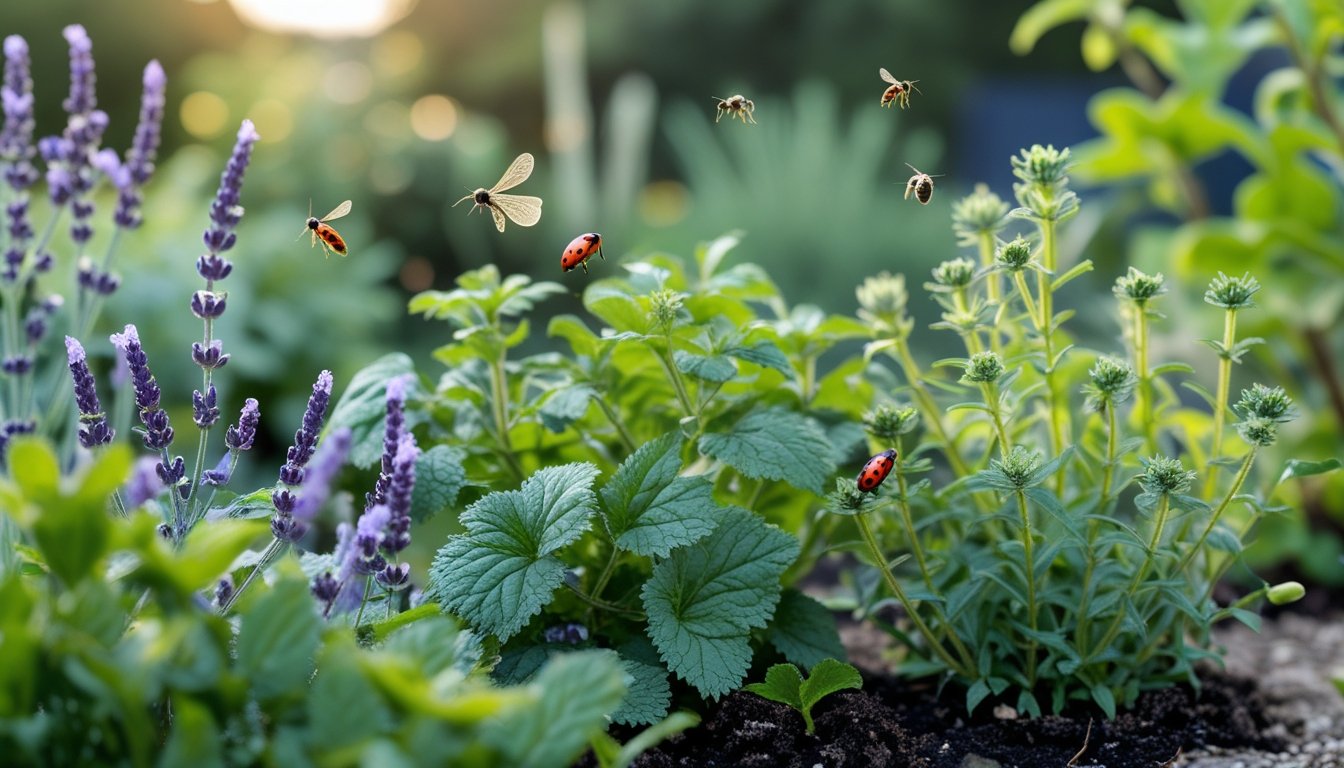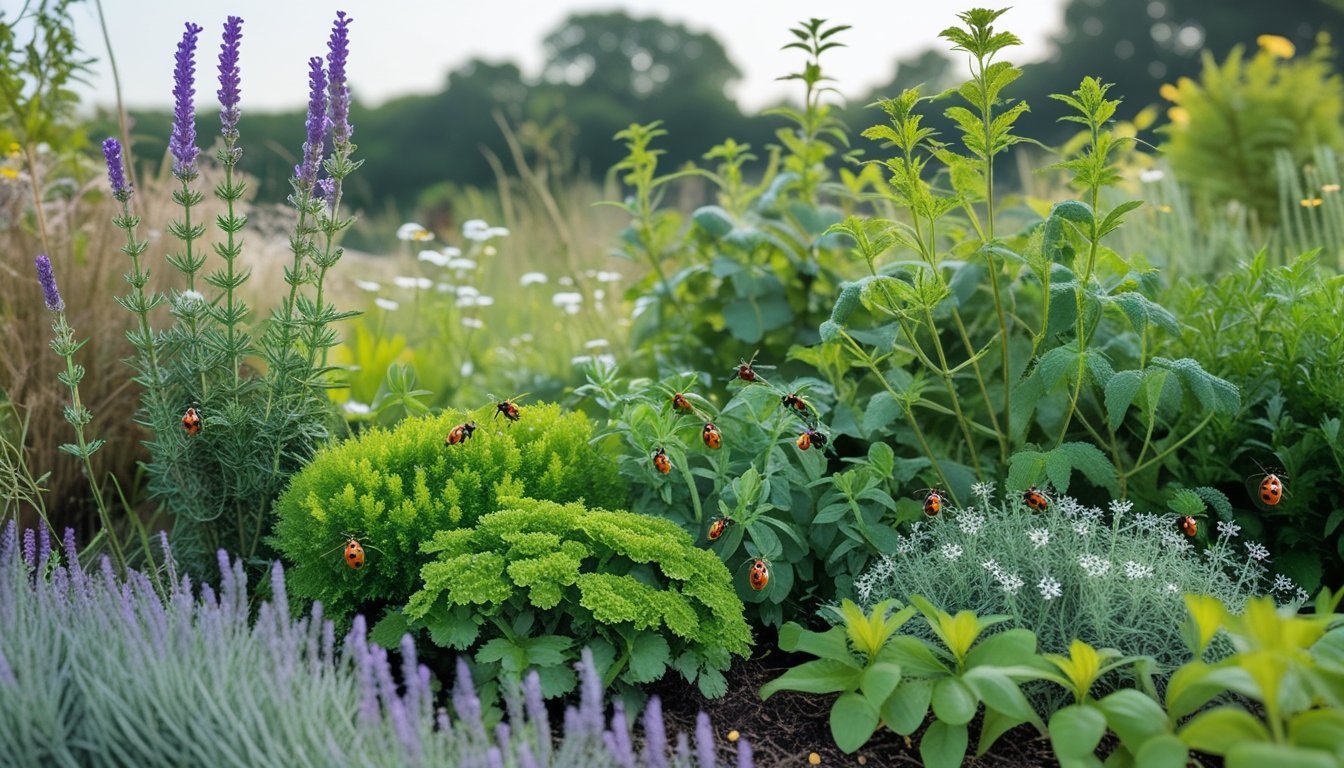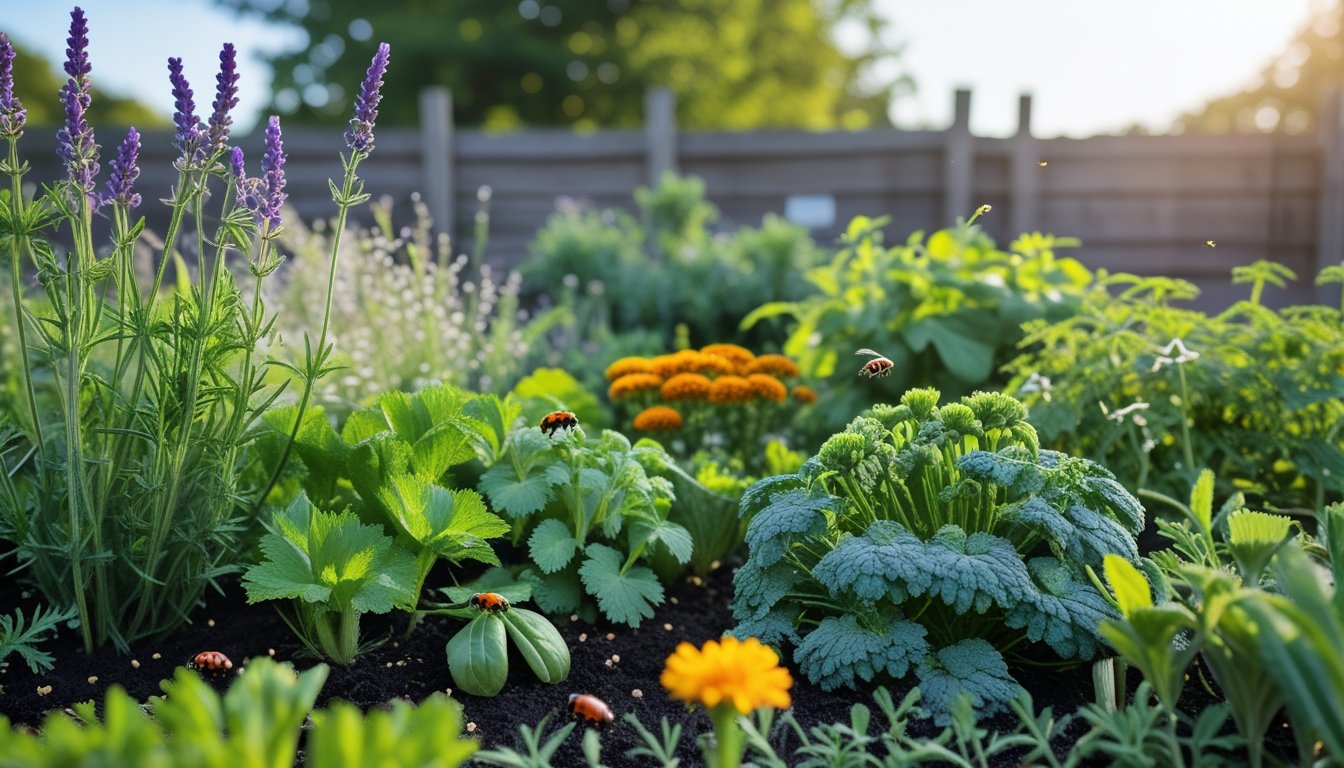Late updated: 09 Oct 2025 10:10
Written by: Emily Thornton
Natural Pest Control Using UK Native Plants: Effective Strategies for Your Garden
Exploring the world of pest control can be overwhelming with numerous chemicals flooding the market. Yet, there's a charming simplicity in turning to nature's allies—native plants. Using UK native plants for pest control not only protects our gardens but supports local ecosystems, fostering both beauty and biodiversity. These plants naturally attract beneficial insects that manage pests and maintain harmony in our gardens.

Incorporating native plants can radically transform how we perceive pest control. As native flora attract crucial allies like ladybirds and lacewings, they help us reduce our reliance on detrimental chemicals. This sustainable practice encourages a balanced, thriving environment where wildlife and plants coexist peacefully.
Our journey through natural pest control strategies doesn’t end with plants alone. The integration of natural allies, alongside cultural practices like proper watering and fertilisation, fortifies plant resilience against unwanted invaders. These harmonious methods ensure that our gardens remain lush and vibrant, echoing the rhythms of nature.
Key Takeaways
- Native plants attract beneficial insects to manage pest populations.
- Integration with cultural practices enhances garden resilience.
- Sustainable pest control supports both plants and wildlife.
Natural Pest Control Strategies With UK Native Plants
Our approach to managing garden pests is enhanced by leveraging UK native plants. These plants naturally attract beneficial insects that help control pest populations and promote a healthier garden ecosystem.
The Role of Native Plants in Pest Management
Native plants play a pivotal role in natural pest management. Their adaptability to local conditions makes them hardy and robust, reducing the need for chemical interventions. By attracting beneficial insects, such as ladybirds and lacewings, they provide a natural defence against common garden pests like aphids and caterpillars. The symbiotic relationship between plants and insects supports an organic gardening environment, maintaining a delicate balance within the garden ecosystem. For instance, oak trees are known hosts for a wide variety of native insect species that help regulate the population of unwanted pests.
Companion Planting Techniques
Companion planting is a strategic method that uses the natural properties of plants to control pests. By planting certain combinations, we can enhance growth and deter harmful insects. For example, marigolds release chemicals from their roots that repel nematodes, while nasturtiums attract aphids away from vulnerable crops. Additionally, planting herbs like mint and rosemary near vegetables can discourage slugs and snails. These techniques promote natural pest control while supporting diverse plant species. The careful selection and placement of plants ensure that the garden thrives, benefiting from increased pest resistance and improved yields.
Building a Thriving Garden Ecosystem
Creating a thriving garden ecosystem involves more than just planting native species. It requires a holistic approach to garden design and maintenance. This includes ensuring soil health through composting and encouraging biodiversity by adding various plant types. By providing habitats for beneficial insects, such as building insect hotels or leaving parts of the garden wild, we enhance the ecosystem's resilience. Birds and small mammals that naturally prey on pests are also attracted to such environments. As a result, a well-balanced ecosystem evolves, reducing the need for artificial pest control methods and fostering a self-regulating garden.
Key UK Native Plants and Natural Allies for Effective Pest Control

Utilising UK native plants in our gardens offers a sustainable solution to pest control. These plants not only repel pests but also attract beneficial insects, fostering an ecosystem where natural predators flourish. By selecting certain plants, we can reduce reliance on chemicals and promote biodiversity.
Marigolds and French Marigolds (Tagetes) Against Nematodes
Marigolds, both the common and French varieties (Tagetes), are exceptional for combating nematodes. These tiny parasitic worms can wreak havoc on plant roots. The roots of marigolds release a substance that nematodes find toxic. By planting them near susceptible crops, we create an invisible barrier that thwart these pests.
These vibrant flowers are straightforward to grow and help maintain soil health. Beyond their ability to deter nematodes, marigolds sometimes attract pollinators, adding another benefit to their presence in the garden. We can see their dual function as both protectors and enhancers of our green spaces.
Lavender, Garlic, and Roses for Repelling Insects
Lavender, garlic, and roses bring beauty as well as practical benefits. Lavender emits a fragrance that repels many unwanted insects including moths and flies. Its aromatic oils are a natural deterrent, making it a perfect border plant. Lavender is also favoured by pollinators, which helps ensure our plants are getting excellent pollen distribution.
Garlic, with its pungent smell, effectively repels aphids and slugs. By planting garlic alongside roses, we not only keep pests at bay but also enhance the well-being of our roses. This combination is a classic example of companion planting that proves beneficial in a decorative yet functional manner.
Encouraging Natural Predators and Beneficial Insects
Creating a welcoming habitat for natural predators like ladybugs, lacewings, and parasitic wasps enhances our pest control efforts. Ladybugs and lacewings feed on aphids, which are common pests in many gardens. We can attract these insects by planting native plants that offer nectar and pollen, such as daisies and yarrows.
Maintaining a healthy habitat also encourages birds to frequent our gardens. Birds are adept at controlling slugs and other pests. By providing nesting boxes and diverse plant species, we ensure a favourable environment for these natural allies, promoting a balanced ecosystem where pests are naturally kept in check.
Frequently Asked Questions

Incorporating native UK plants into our gardens offers us effective ways to deter pests while enhancing biodiversity. By selecting the right species, we can manage pests naturally, attract beneficial insects, and reduce the reliance on chemical pesticides. This approach promotes sustainability and ecological balance.
What are some effective British plants for deterring common garden pests?
Certain UK native plants are known for their pest-repellent properties. Plants like lavender, rosemary, and mint can be highly effective at deterring insects such as aphids and slugs. By strategically placing these in our gardens, we can create a natural barrier against common pests.
How can native flora be utilised to manage pest populations sustainably in the UK?
Harnessing the power of native plant species allows us to create sustainable pest control systems. Native plants are adapted to the local climate and soils, thriving without the need for synthetic inputs. Their presence can support beneficial creatures and naturally keep pest numbers manageable.
Which UK native plants are beneficial for attracting predatory insects to gardens?
To encourage predatory insects, we should consider plants that provide nectar and pollen. Species such as yarrow, chamomile, and borage are excellent choices. These plants can attract ladybirds, hoverflies, and lacewings, which actively reduce populations of harmful insects like aphids.
Can interplanting with native UK species improve pest control in vegetable patches?
Interplanting garden beds with native plants can significantly boost pest control efforts. By mixing flowers such as marigolds with vegetables, we create a diverse landscape. This diversity can confuse pests, provide habitats for beneficial insects, and enhance the resilience of our vegetable patches.
What are the top recommendations for perennial British plants with pest-repelling properties?
Perennial plants like marjoram, thyme, and sage are well-regarded for their pest-repelling abilities. These plants can be planted once and enjoyed year after year, offering continuous protection against a range of pests. Their aromatic qualities not only deter unwanted insects but also add beauty and fragrance to our spaces.
How does companion planting with native UK species aid in reducing the need for chemical pesticides?
Companion planting leverages the natural protective traits of plant species. By pairing compatible plants, we can foster environments where pests are less likely to thrive. For example, placing strong-scented herbs alongside vegetables can mask crop scents, reducing the attractiveness to pests and lowering the need for chemical interventions.
